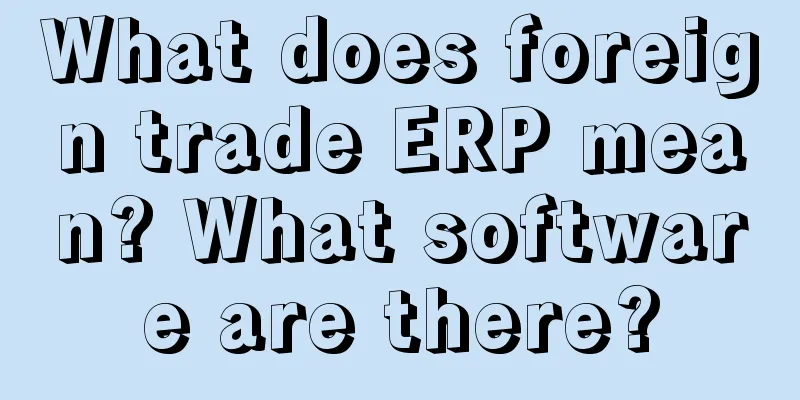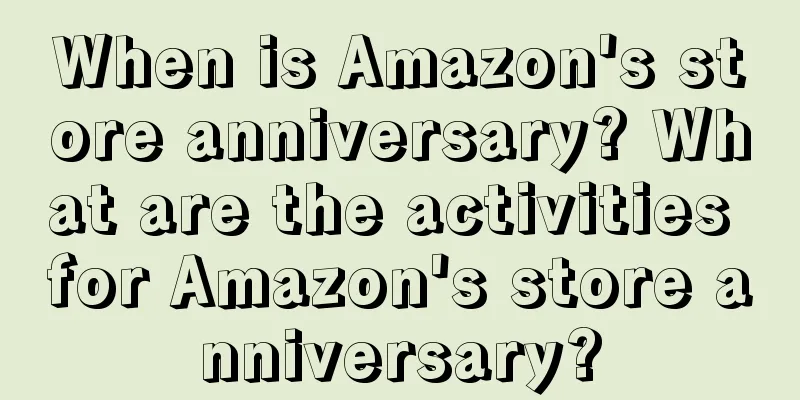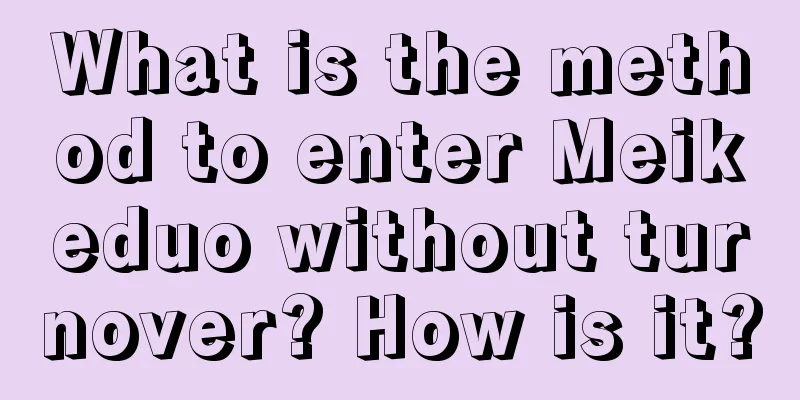In the years of game community operation, I summarized these

In the current market environment, the game community is a crossover between the game industry and the content industry. Many people and companies have tried to use the concept of community to extend the user life cycle of games, but there are still quite a few practitioners who cannot even distinguish the difference between community and social group. For example, when I was interviewed, I often encountered a community operator doing community operation. So before talking about how to build a community, I think it is more appropriate to discuss what a community is. 1. The meaning of game communityThe so-called community is a group of people who share common interests and hobbies in certain fields and have certain social relationships. When the labels of games and the Internet are added, it is the game community we are familiar with today. Different from the game community, the game community focuses on user activity indicators, and conversion indicators when necessary, and often promotes user activity in the form of rich content; while the game community focuses on user conversion indicators, and more often settles users through social relationships. Because social relationships are also a way of community content output, the community can include community functions. If we further subdivide it, from my perspective, we can divide it into official game communities and third-party game communities. The characteristics of official game communities are: timely and rich PGC content, more practical tools or content, and a good public opinion atmosphere. The characteristics of third-party communities are: the interaction volume of UGC content is particularly high, and the more it blames the game, the easier it is to resonate. This is because in addition to the goals related to activeness, the official also needs to feed back the game conversion, and has a strong control over public opinion, which often turns public opinion into conflicts between players. The third party is more of a conflict between players and the official. They have a more mature commercial route, and through the number of users, they attract the attention of the product side and have to invest more resources in this platform. It is also important to note that operations on third-party platforms are also divided into game independent operations and platform operations (such as taptap, etc.). The two parties are responsible for different indicators. If it is the official operation of the game, it is more inclined to game conversion indicators, and it is impossible to modify the product framework functions according to user needs. Therefore, it seems more appropriate to call them game channel operations or new media operations from the author's point of view. 2. The value of the gaming communityThe question about community value is definitely a question that is often asked to people working in the game community industry. So why not skip the single business level and analyze it from the perspectives of both the company and the players? 1. Value to the companyOnce it comes to the value to the company, all the values explained must be quantified. The premise is to tell the company why you are doing well through quantification. (1) Retention and Active Value Common core indicators: daily active users, game penetration (corresponding to game community daily active users/game daily active users), etc. Other indicators: monthly active users, average online time per person, average opening frequency per person, number of posts, amount of interactions, etc. (adapted to local conditions according to business objectives). Here we need to emphasize the concept of game penetration, because we are working on the game community, and the extent of game penetration determines the degree of influence on the game. It is a basic indicator to prove the value of community feedback to the product, and this indicator can theoretically exceed 100%, which proves that most of the daily activity of the game comes from the community. Products with better penetration indicators are about 10%, such as King's Camp. At the same time, through these active indicators, we can also intuitively feel the so-called word-of-mouth effect of the game, that is, whether a gameplay is popular or not. We can look at the keyword density of this gameplay in the community, the proportion of players discussing it, etc. In a game community product that I have operated, a corresponding section was established for the construction gameplay because of the high keyword density. The game product also heavily built a construction sandbox gameplay based on the community content, which spawned a group of construction players and indirectly promoted the improvement of the game's LTV. (2) Paid dyeing value Common core indicators: number of exposures/readers, number of paying users, payment value, etc. (actual results are subject to product negotiation). The so-called "coloring" is to mark users, marking the users who are affected by community content within a certain period (usually within a week), and then pulling the payment behavior of these users in the game to prove the payment-promoting value of community content. In all the game community experiences I have run so far, I have found that the overlap between the active community users and the active game users is more than 80%. Therefore, there is sufficient reason to "color" this group of users to prove that the community can not only affect activity but also payment. To give the simplest example, "live streaming with goods" is to use content to influence user payment behavior, but this gameplay is integrated into the field of game communities. 2. Value to playersPlayers don’t care about so-called quantitative indicators. Most people will only get direct needs met from the community, that is, they think about the value of the community through user thinking. Then the value to them can be summarized into the following dimensions. (1) Instrumental value I won’t talk about the benefits. Those who have built user portraits will know that the first demand of players is almost always strategy-oriented content. Players who have not entered or have just entered the game want to know whether the game is fun or not, so you need to prepare a simple game introduction, novice guide, etc. After playing for a while, advanced players tend to focus on reducing investment costs, so they need to create more targeted guides or tools for the current version. For example, the Onmyoji-related community will prepare a guide to the current event lineup, and the DNF-related community will prepare an equipment upgrade calculator, etc. This is the value of the tool for them. Whether it can meet the demand for tools is also one of the keys to whether the community can add new ones. (2) Social value This is the ultimate reflection of whether the community has been built and positioned, that is, whether users can establish social connections and settle the community. If in the early stage, a group is formed because of the hobby of playing the same game, then in the mature stage of the community, after leaving the game or even after the game is shut down, the connection between users can still exist, which means that the community has settled its own tone and generated social value. For example, when you think of movie reviews and book reviews, you think of Douban; when you think of professional knowledge, you think of Zhihu; when you think of the straight male community, you think of Hupu. This is the community tone they have built, which ultimately drives the social interaction between users. However, there are very few vertical game communities that can achieve this level. In the game field, the easier path to achieve is the derivation of IP culture and the upgrade of streaming media. 3. How to build a game community from scratchThe core of community building lies in three modules: users, content, and activities. No matter how different the community is, as long as the relationship between the three is well managed, a community with good activity indicators can be born. 1. Users are the foundationThe first thing to talk about is the user. The most efficient way to operate the user module is to use KOLs, that is, to capture a few top users to influence the behavior of users at other levels. This is also the way currently practiced by various top community products, such as a certain alphabet website. So how to release the influence of top users is the key to this module. The answer to this problem is to build a bottom-up incentive system. The author's experience is summarized as the "123" principle. The theoretical basis comes from Maslow's hierarchy of needs. This group of users is different from ordinary users. In addition to material needs, they also have higher-level spiritual needs. The author has operated some top mobile games and found that more than 80% of active paying users in the game community are also active in the community. If these users are only given simple material rewards, they cannot be maintained in the community for a long time. (1) “1” brand The fan effect that one person can bring may be small, but a group is different. All small fan effects can be integrated into this group through a branded operation, and this team can be promoted as a kol. With the same resources, a greater level of exposure can be achieved. For new members: quickly gain basic visibility. For old members: strengthen the sense of belonging and meet social needs and honor needs. It is worth mentioning that if it is a game community, this kind of branding can be connected online and offline. The offline community can adopt a certification system, and the online community can adopt in-game titles and props to further enhance the team's influence and make game players feel more immersed. (2) “2” types There are usually two types of players in forming a player team. One is the content producer, and the other is the community activist. Their characteristics are as follows: Content producers: They have the ability to produce hardcore content, can independently complete streaming content, have a high gaming level, and are active in the community on a weekly basis. They can be screened through content interaction and reading volume indicators. Community activists: They have strong short content production capabilities, are good at creating a lively atmosphere, and are active participants in various activities in the player team. They are also very willing to help deal with various chores in the team to reduce the operational workload. They can be screened by constructing portraits through interaction indicators, login frequency indicators, etc. (3) “3” indicators The three indicators include: reading index, interaction index, and influence index (number of followers, number of fans, etc.). The significance of the existence of indicators is a kind of feedback behavior, feedback to users and feedback to operations, which together form the measurement indicators of kols. Because these feedback indicators are the data that users pay the most attention to, we should not only place them on the user’s most prominent personal homepage to allow other users to form a cognitive portrait of him, but also establish trend charts and place them in the creator’s background to help them find their own data growth singularity and make explosive behaviors a long-term trend. Because of this, data-driven thinking in operations is particularly important. (This behavior of looking at data is like the author's inability to stop speculating in stocks: "It's going up, it's going up today" "It's going down today, is it because my title is not good enough?") For reading users, the output of interaction indicators is not only due to the content of the creator, but also whether the product's interactive functions are convenient. Many mature product managers will try to lower the threshold for readers to interact as much as possible, or add some cute and interesting interactions to attract readers' attention. After all, no matter how awesome a content creator is, he has grown step by step from an ordinary reading user. This "threshold-entry" gameplay in psychology can be used in the functions of social content products with no harm and only benefits. It should still be said that some platforms have completed the complete commercialization route. They will also turn the revenue from user-generated content into a non-public feedback indicator. Due to the need for confidentiality, this indicator is not included in the three basic feedback indicators. 2. Content is the embodimentContent is the embodiment of all user behaviors. Therefore, from the perspective of content composition, it presents a "PPU" phenomenon. That is, PGC, PUGC, and UGC may have different meanings in a broad sense. Therefore, the author would like to briefly introduce the "PPU" in the game community that I know. (1) PGC PGC refers to the content produced by the official community, which usually includes game announcements, game promotional videos, and novice guides. The core purpose of PGC content production is to achieve game conversion. In addition to the directly synchronized announcement content, the initial amount of other PGC content depends on the amount of funds and the subsequent ROI to determine the continuous supply quantity. Therefore, it can be observed that third-party platform communities rarely produce PGC content themselves, and most of the PGC content is self-built by the official game community, which is also a strong point of this type of self-built platform. (2) PUGC PUGC content refers to UGC content that is influenced by the official. Not only is the content professionalism close to PGC, but the quantity is also large. Therefore, PUGC is the core content ecosystem that most game communities want to build. Its core purpose is to promote activity in the community and become a creative template for ordinary users, playing a connecting role. Next, I would like to explain from three aspects: demand quantity, generation means, and distribution methods. Demand quantity: It is strongly correlated with the number of content pieces exposed to users. We hope to present high-quality content to users as much as possible to retain them. A simple formula can be constructed to make a rough estimate. PUGC content demand ≈ average number of articles read per time * average daily opening frequency PS: Each product has its own algorithm, resulting in different content presented to users each time it is opened. The average number of articles read per person per time * the average daily opening frequency can roughly calculate the number of different content a single user needs throughout the day. Means of production: The producers are users, but most of the content frameworks or propositions are instructed by operations, through a task system (the task system is mostly adopted internally by top users) or activity packaging gameplay (when the task gameplay is made public, it will be packaged into a form of activity, which is also convenient for tapping potential creative users). After the whole process goes smoothly, related product functions will gradually emerge, such as the creator's income background. Distribution method: First of all, it must be algorithm recommendation distribution, but this article is about operation, and the author only talks about it from an operational perspective. So what we need to do is to establish the three basic processes of "review, discovery, and exposure" to realize operational distribution.
It is no exaggeration to say that if a user can see his favorite PUGC content every time he enters the community, then the operation of the community is half successful. (3) UGC In the field of game communities, UGC content is not much different from PUGC. In my opinion, it may only be generated by whether there is operational support and training. Their sources are mainly from operational activities (such as simple topic activities initiated by operators to generate content) and product functions (such as Onmyoji can take screenshots and share them with the community when it opens an SSR). The theoretical basis is that user welfare needs generate UGC content; low-threshold product creation enables users to develop UGC habits. To sum up: content is a form that will never go out of style, and the content type distinctions that the author is aware of are just the tip of the iceberg in the gaming field. Under the current supply and demand background, various roles that make a living from this have also emerged, such as self-media, MCN, etc., so it really does not hurt to do a good job in content operation. 3. Activities are a meansActivity operation is a relatively ever-changing basic capability. It is the most effective means for our community operation to intervene in user relationships. There is a popular saying among operators: "As long as the cost is sufficient, there is no KPI that cannot be achieved by activity operation." Having said that, is there really any community that doesn’t calculate ROI conversion? So for the activity module, what I want to talk about most is how to make a good activity within a limited cost. I would like to call it the “137 Suggestions” (the suggestions come from a colleague’s many years of actual data analysis. If you are lucky enough to see it, please add some explanations. (1) “1” activity purpose The purpose should be clear and it is best to keep one purpose per activity. It is a basic quality for event operators to be sensitive to holidays, but how many people do events with a purpose? Or how many people want to achieve multiple goals in one event? These are taboos for event operators. When designing activities with a purpose in mind, no matter how wild the ideas are, operations can maintain the main line and not be chaotic. If the operations themselves are not chaotic, the user's participation threshold and conversion path will be clearer. When we review the situation, we also have a main goal to analyze the data and find problems. However, sometimes there will be situations where multiple "KPIs" need to be achieved. Although multiple purposes for one activity are not recommended, the activity can be split into multiple activities or multiple stages to complete, at least without adding too much understanding cost to the user's participation path. (2) “3” days activity period Regardless of the type of event, the number of participants always presents a quasi-normal distribution curve, and the peak of this curve is mostly on the third day of the event. This conclusion comes from the data of more than 100 activity reviews. The author boldly speculates that it is caused by the composition of users. By the third day of the activity, all active old users had participated, so from the fourth day onwards, the proportion of old users participating in the activity gradually decreased. (3) No more than once every 7 days In terms of frequency, there is a maximum of one activity in 7 days. For users, there will be a period of fatigue when participating in activities, and this period follows the period of study and work, which is one week. During this period, the operation will try to choose the activity launch period based on the user's active habits. For example, community products with users under the age of 20 will mostly choose to launch activities on Thursdays and Fridays, covering at least one rest day. What if there are many activities that must be done during this period? In this case, you need to package the activity concept, such as the common "Double Holiday" concept, which combines the two festivals into one activity. In summary, the essence of the "137 Suggestions" is a method based on data analysis feedback to form a path for users to participate in activities. If the user base is small or if all staff can be guaranteed to have the same understanding as the operation, this suggestion may have some deviations, and if you have to compromise the effect to carry out the activity, please make sure to keep the purpose clear as the basic principle. Finally, I would like to emphasize that the more fun an activity is, the more people will participate. Don’t hold an activity just for the sake of holding an activity. 4. Community FAQQ1: When conflicts arise between KOC/KOL and ordinary users, how should they stand on the side? A1: When the odds are evenly split between the two sides, choose the KOC/KOL side. These are the people you have trained. Helping them can increase their loyalty to the platform. If you help ordinary users, it will easily destroy the image established by the previous player team. In the case of obvious mistakes, unless the KOC/KOL clearly states that he/she will not obey the organization's arrangements, we will have to perform "yin and yang" operations, punishing them according to the community rules on the surface and appeasing them behind the scenes. Q2: How to deal with the negative public opinions of players towards the community platform or game? A2: First appease the player team you support to prevent internal loss of trust, and then arrange for the player team to release positive public opinions to drive their fans' support. If necessary, it is necessary to create public opinion events to achieve the goal, such as first arranging trusted players to stand on the opposite side of the official to analyze the speech, and then gradually correct the direction of public opinion of supporting players. Q3: How to fill the insufficient content in the initial stage of community building? A3: In the initial stage, we should focus on filling the PUGC part. After obtaining a certain user demand portrait, we will build task-based activities for the player team to promote the output and form sample content. After completion, we will lay out public activities to guide ordinary users to produce the UGC part. If there is no formed user team, we can seek outsourcing writers or MCN to complete the PUGC part. Q4: How to solve content security issues? A4: Write user publishing rules and advocate production according to the rules. At the same time, establish a "review before release" mechanism to prevent the release of illegal content. If conditions permit, you can join the "machine review + human review" model to form a user perception form of "release first, review later". The human review step can complete the function of content distribution. Q5: What is the composition of the community operation team? A5: The core functions are user operation, event operation, and content operation. Since the three functions are closely related, they can be bound to one position. For multi-person teams, it is recommended to use OKR to differentiate the work content of personnel. If the cost is not taken into account, the personnel allocation can also be divided by game type or even a single game project team. Do not try to divide by function, such as focusing user resources on a single position. The loss of core users caused by the turnover of operation personnel is usually irreversible. 5. Final ThoughtsAs a community operator, you have to face many more problems than these, especially the value issues pursued by capital are constantly being updated, but this is a job that interacts with people's hearts. It is the warmth and enthusiasm that I feel in the cold Internet environment. Even if I often tell the kids in the department to quantify, I always understand one thing - people's hearts can never be replaced by numbers. Then you will find that when community users understand your enthusiasm, the community ecology you want has been formed. |
<<: How to operate community content? Tiantian Fund has the answer!
>>: Brand No. 1: Vacancy Competition Series 017
Recommend
How to increase traffic for a new Shopee store? Method introduction
Traffic is an important basis for store conversion...
My digital pencil case
If you want to do your work well, you must first s...
What are the types of Amazon SD ads? Where are the SD ads located?
Amazon SD ads refer to display-type promotion ads....
299 yuan per set, 24 hours a day, AI anchor enters the live broadcast room
Have you ever had this experience: when you open a...
When Luckin Coffee and Moutai sell hot chocolate together
After gaining huge traffic with "Jiangxiang L...
Which cross-border e-commerce platform is the most profitable? What should you pay attention to when doing cross-border e-commerce?
In recent years, the rapid development of cross-bo...
How do I verify my Facebook identity if I change my phone? Can I log in with a different phone?
In the modern era of social media, Facebook has be...
Does off-site traffic from Amazon affect rankings? Why?
If Amazon stores want to generate more revenue, th...
How to refund Lazada deposit? Answers to questions about refunding deposit
There are still many merchants opening stores on L...
Conduct a data-driven experience review for your team
The author of this article is divided into three p...
Is it difficult to increase performance? That’s because you don’t know…
In today's highly competitive business environ...
AI e-commerce is "converting exports to domestic sales"
In the complex environment of cross-border e-comme...
What are the most exported products by cross-border e-commerce? How do cross-border e-commerce companies choose categories?
As an emerging business model, cross-border e-comm...
Being a clone in TikTok is where AI cannot surpass humans
In the TikTok, copying people and starting imitati...
What are the fees for individual cross-border e-commerce? How can individuals do cross-border e-commerce?
With the rapid development of cross-border e-comme...









